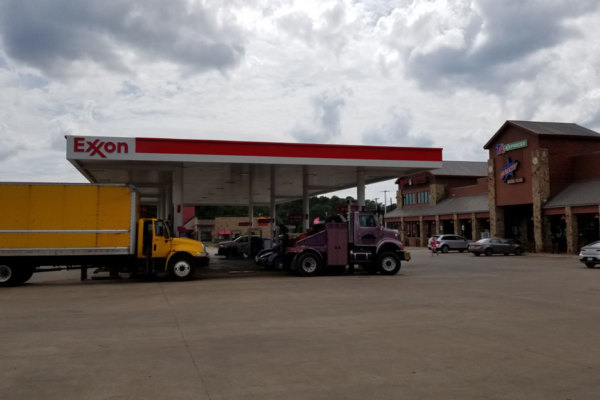An increase in box trucks, RVs and passenger vehicles creates new opportunities for truckstops and travel plazas. On an episode of NATSO’s The Truck Stops Here podcast, Darren Schulte, vice president of membership, and I sat down with Lisa Mullings, CEO of NATSO, to discuss how NATSO members can take capture these groups of customers.
The number of box trucks on the road has increased, driven in part by the increase in last-mile deliveries and the transition to electronic logging devices. During a recent industry meeting, Mullings said a representative from the Owner-Operator Independent Driver Association said their members are purchasing more box trucks than large trucks.
“That is interesting because their members are the independent truck drivers,” Mullings said. “The smaller trucking companies are now moving to smaller trucks. They don’t have to get a CDL, they don’t have the hours-of- service regulations, and there is money to be made there.”
Customers of all types are concerned about speed, but that is particularly true for professional drivers. Mullings said ELDs have also impacted inside sales at locations. “Drivers don’t want to wait anymore. They don’t have time, whether it is waiting inside to pay or waiting to pump fuel,” she said, adding that drivers have to be conscious of where they spend their time because it is taking money out of their pockets when they’re not on the road.
Schulte said that 30 years ago, truck drivers were shoppers. “They’d mosey through a store and shop,” he said. “Drivers say if they have to go deep inside a store to get a sandwich or something to buy, they don’t do it.”
Schulte said locations that move food closer to where the drivers enter have significantly higher food sales than those who don’t.
The Need for Auto Diesel
Drivers of box trucks are likely more accustomed to fueling in the front of a location. “These trucks are often migrating to c-store operators who are getting into our industry,” Schulte said, adding that traditional travel centers are increasingly making sure to put auto diesel in more locations.
When auto diesel is visible, locations attract more RVers and work vehicles, such as plumbers or landscapers. “Those people that are making that investment are saying they’re seeing RV customers they never saw before, they have demographic changes, and they are getting a return on investment,” Schulte said.
Mullings said she expects to see NATSO members have a higher percentage of their total customers from cars and non-trucks. “I think operators know that they have to look for ways they can appeal to four-wheelers. They’re increasing in importance,” she said.
Listen to the podcast at www.natso.com/boxtrucks.com.
Subscribe to Updates
NATSO provides a breadth of information created to strengthen travel plazas’ ability to meet the needs of the travelling public in an age of disruption. This includes knowledge filled blog posts, articles and publications. If you would like to receive a digest of blog post and articles directly in your inbox, please provide your name, email and the frequency of the updates you want to receive the email digest.


